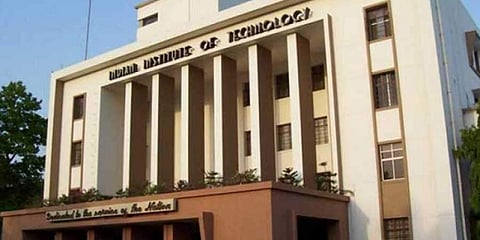

Researchers at IIT Kanpur have developed a real-time dehazing method that allows increased visibility in hazy/foggy weather conditions, potentially solving a major problem faced by the Indian Railways - ensuring timely and accident-free running of trains during dense fogs.
This new method, that allows better visibility from a single view without using any prior knowledge about the outdoor scene, has been developed at the Computer Vision Lab by Saumik Bhattacharya and Himanshu Kumar, former PhD students under the guidance of Dr K S Venkatesh and Dr Sumana Gupta, at the Department of Electrical Engineering at Indian Institute of Technology, Kanpur.
Although other dehazing methods exist, the one developed by IITK researchers is more effective and less time-consuming.
The existing methods increase the contrast of an image but remove many details of structural information after processing.
Those methods also introduce severe colour range suppression in the processed image and show a drop in performance in conditions of dense fog.
The IITK research team claims that their method outperforms the existing methods in most of the cases.
For online, real-time processing of flawed images, processing time plays a key factor.
The proposed dehazing model gives a low time complexity compared to other state-of-the-art methods.
The team observed after comparing the time lapse with other methods that the proposed method provides a speed approximately 6 times faster than existing methods in commodity hardware.
Besides, unlike certain multispectral solutions available in the market that are enormously expensive, this will be available at a very low cost.
This new method can be critical in vision-assisted vehicle navigation in hazy/foggy weather, surveillance in bad weather conditions and can play an important role in aviation, biomedical processes like MRI and CT scan, and computer vision applications.
How the Proposed Dehazing Method Works Dehazing is a typical image enhancement technique.
Image enhancement is a basic pre-processing step in different applications that require visual input.
Hazing and fogging introduce a tint to the image of a scene.
A tint can be explained as an addition of white light which varies in intensity across the image.
And this intensity variation depends on how far the object lies from the camera.
To tackle this issue of non-uniform tint across the image, the team applied a Color Uniformity Principle (CUP). CUP is an asymptotic behaviour of texture with respect to distance.
Utilizing this asymptotic behaviour, we estimate the transmission map which corresponds to the visibility range of the scene.
Utilizing the estimated transmission map, the scattered light component is estimated, which eventually leads to recovery of the scene.
The figure shows some examples of such recovery utilizing the proposed method.
The complete process involves three main stages namely (a) transmission map estimation (b) atmosphere scattering parameter estimation (c) equalization and dehazing.
By applying CUP, a transmission map is estimated which is then refined with a fast-guided filter.
The refined transmission map helps in estimating the atmospheric scattering parameter.
Then estimation of radiance leads to the dehazing of the image using the model equation developed by the team.
The present work is an addition over the previous work 'Method and System for Expansion of Visibility Range of an Image', for which original patent was filed in 2016.
The research team has also filed a patent for the new method 'Method and System for Dehazing Videos and Images in Real-time' developed by them.
